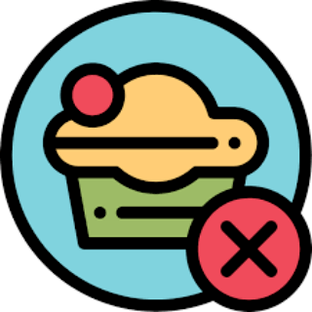The Japanese diet has become widely popular among those looking to lose weight. They are most attracted by the short duration (only 14 days) and the availability of the necessary products.
How the Japanese diet evolved
Many people think that the Japanese diet is related to the daily diet of the people of the country, but this is not the case. Probably the diet was given this name as the diet and high efficiency had to be strictly adhered to. The Japanese are very obligatory and responsible people, they turn to every business with all attention and strictly follow the established rules, which is why they achieve high results.
Another variation on the appearance of the name is where the diet was created. It is believed that it was developed at the Yaeks Japanese Clinic. Nutritionist Naomi Moriyama, who developed the slimming system, has full confidence in its effectiveness and the adaptability of the products to the standard diet of Europeans whose tastes differ significantly from those of the Japanese.
Benefits of the Japanese diet

The Japanese diet helps cleanse the body of toxins and puts the metabolism in order in just 14 days.
A large amount of fruit saturates the body with fiber and helps improve intestinal function, and a sufficient amount of food maintains a feeling of satiety and high performance.
Features and principles
Diet, unlike many others, does not mean fractionated nutrition. It is designed for three meals without additional snacks. You can’t change your diet days in places and try to "improve" your diet in any way, otherwise it’s no longer a Japanese diet and you have to start over.
You should drink a glass of cool water every morning, this will help speed up your metabolism and get rid of the feeling of hunger. It is also advisable to drink as much pure mineral (carbonated) or boiled water as possible for the remaining time.
Shopping list

To successfully maintain your diet, you need to purchase the following foods:
- 1 packet of your choice of green tea. Make sure there are no flavors in the composition.
- 1 packet of good coffee beans (or ground).
- 2 cassettes (20 pcs. ) Chicken eggs.
- 1 kg. chicken fillet (breast).
- 1 kg. beef pulp (better to buy lean).
- 2 kg. sea fish fillet.
- 0, 5 l. extra virgin olive oil.
- 2 medium white cabbages.
- 1 kg. zucchini or eggplant.
- 2-3 kg. fresh carrots.
- 1 kg. any fruit other than bananas and grapes.
- 1 l. tomato juice.
- 1 l. kefir.
- 2 lemons.
All provisions should be fresh and the best.
We should not be in the diet

Avoid sugar and salt during the Japanese diet. The same rule applies to all kinds of bakery products, confectioneries and alcoholic beverages.
Japanese diet menu day by day
The diet of the Japanese diet is very similar to the well-known chemical diet that is often used to treat obesity in diabetics. Also use the effect of reducing the amount of carbohydrates while increasing the proportion of protein.
The diet menu is quite strict, no changes are allowed in it.
One day
- Breakfast: black coffee without added sugar, sweeteners or milk.
- Lunch: 2 hard boiled eggs, boiled cabbage seasoned with vegetable oil, and a glass of tomato juice.
- Dinner: 200 gr. fried or cooked fish.
2 days
- Breakfast: black coffee with a slice of rye bread.
- Lunch: boiled cabbage flavored with vegetable oil + 200 gr. fried or cooked fish.
- Dinner: a glass of kefir 100 gr. boiled beef.
3 days
- Breakfast: black coffee with a slice of rye bread, heated in a toaster (you can replace it with unflavoured, unflavoured biscuits).
- Lunch: zucchini or eggplant fried in any number of vegetable oils.
- Dinner: salad from raw cabbage, flavored with vegetable oil + 200 gr. cooked beef without salt.
4 days
- Breakfast: fresh medium-sized carrots, grated or otherwise conveniently chopped + the juice of a whole lemon.
- Lunch: a glass of tomato juice + 200 gr. cooked or fried fish.
- Dinner: salad from 200 gr. any fruit.
5 days
- Breakfast: fresh medium-sized carrots, grated or grated in another convenient way + the juice of a whole lemon.
- Lunch: a glass of tomato juice + 200 gr. boiled fish.
- Dinner: 200 gr. any fresh fruit.
6 days
- Breakfast: black coffee without additives.
- Lunch: 500 gr. boiled chicken breast without salt + salad of fresh carrots and cabbage seasoned with oil.
- Dinner: one whole fresh carrot + 2 boiled eggs.
7 days
- Breakfast: a glass of green tea.
- Lunch: 200 gr. cooked beef without salt.
- Dinner: 200 gr. any fresh fruit, or 200 gr. boiled or fried fish, or 2 boiled eggs + fresh carrots, or a piece of boiled beef with a glass of kefir.
8 days
- Breakfast: black coffee.
- Lunch: 500 gr. boiled chicken breast without salt + raw carrot salad with cabbage, flavored with vegetable oil.
- Dinner: 2 boiled eggs + fresh carrot salad dressed with vegetable oil.
Day 9
- Breakfast: fresh carrots flavored with lemon juice.
- Lunch: 200 gr. boiled or fried fish with a glass of tomato juice.
- Dinner: 200 gr. any fresh fruit.
10 days
- Breakfast: black coffee without sugar.
- Lunch: 3 medium carrots dressed with vegetable oil + boiled eggs + 50 gr. cheese.
- Dinner: 200 gr. any fresh fruit.
Day 11
- Breakfast: black coffee without additives, a slice of rye bread.
- Lunch: any amount of eggplant or zucchini fried in vegetable oil.
- Dinner: 200 gr. boiled unsalted beef, fresh cabbage salad, seasoned with vegetable oil and 2 boiled eggs.
Day 12
- Breakfast: black coffee.
- Lunch: 200 gr. cooked or fried fish with fresh cabbage salad seasoned with vegetable oil.
- Dinner: a glass of kefir + 100 gr. cooked beef without salt.
Day 13
- Breakfast: black coffee without additives.
- Lunch: boiled cabbage seasoned with vegetable oil + a glass of tomato juice + 2 boiled eggs.
- Dinner: 200 gr. cooked or fried beef in vegetable oil.
Day 14
- Breakfast: black coffee without additives.
- Lunch: 200 gr. cooked or fried fish, fresh cabbage salad flavored with olive oil.
- Dinner: 200 gr. boiled beef without salt + a glass of kefir.
How to stay on a diet

In order not to break your diet at the most appropriate moment, try to follow the recommendations:
- schedule for a month in which there are no big holidays and trips;
- always remember the motivation for losing weight;
- find yourself a hobby;
- argue with a loved one not to break;
- just believe in your own strength!
How to get into the Japanese diet?
Any diet is a great stress for the body, so you need to prepare for it in advance.

At least a week before the designated day, start limiting your sugar intake and gradually reduce your food intake as well. Try to reduce (or even exclude) from the diet all foods that can be categorized as "fast food, " "sweet, " or "starchy. " For example, if you ate 5 cakes a day, you should remove one from the diet each week. for the first day of the diet, the body lives peacefully for 2 days without cake.
Many people find it a great help to surround themselves with various Japanese accessories (chopsticks, tea ceremonies, figurines, etc. ). They help you tune in in a psychologically appropriate way.
When your diet is over, you should by no means run and overeat your favorite foods. Start gradually introducing familiar foods into your diet, starting with small portions. Then the effect of weight loss can last for a few years because it is not recommended to repeat the diet earlier. The best solution would be to introduce yourself to proper nutrition, this habit allows you to always stay in shape.
Contraindications
There are no ideal diets, so even this system is not suitable for all people. First, during dietary restrictions, the body is forced to undergo serious psychological tests. This is especially true for people who live in big cities where you can find all kinds of cafes and fast food at every step. In addition, there is a severe restriction on access to nutrients during the diet, which puts additional stress on the body.
If a person has problems with the work of the cardiovascular system, kidneys or liver, has chronic gastritis or an ulcer, he can in no way continue the Japanese diet. Otherwise, any disease can exacerbate it sharply: large amounts of fluid will affect your kidneys, and green tea and coffee will have a sharp effect on your heart due to its high caffeine content.
Salt restriction can also have serious consequences. Any doctor will confirm that a small amount of salt is simply necessary for the body to function normally, and its sharp rejection will lead to fluid retention and thickening of the blood vessels. Therefore, many experts continue to advise adding a little salt to foods despite strict dietary recommendations.
The Japanese diet has many benefits, is easily tolerated, but may be contraindicated in certain diseases. Gwyneth Paltrow and many other famous personalities practically lost weight on it.































